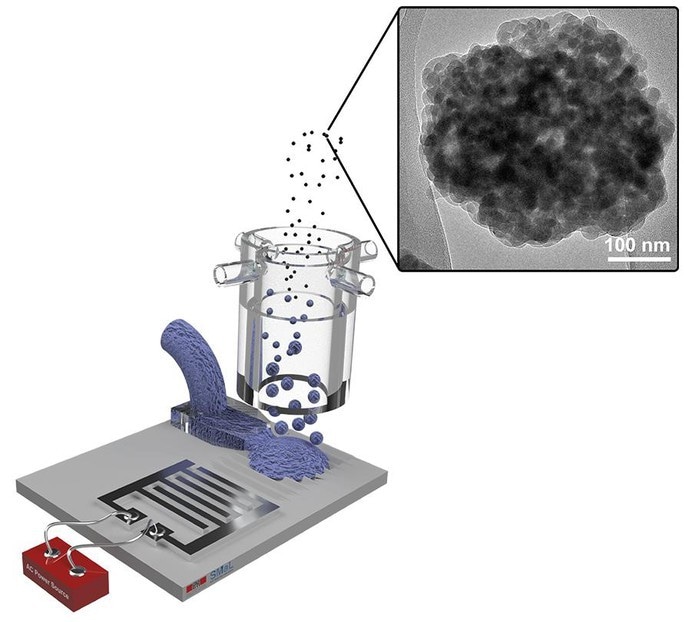May 16 2019
Solutions are generally formulated into solid particles of controlled compositions and sizes through spray‐drying, which happens to be a low-cost and extensively used process.
 In this new paper we employed surface acoustic waves (SAWs) to produce amorphous nanoparticles. The fast solvent evaporation kinetically suppresses the crystallization yielding amorphous particles of different materials. (Image credit: EPFL)
In this new paper we employed surface acoustic waves (SAWs) to produce amorphous nanoparticles. The fast solvent evaporation kinetically suppresses the crystallization yielding amorphous particles of different materials. (Image credit: EPFL)
Moreover, this process can provide control over the spray‐dried particle structure, for example, crystallization of solutes can be kinetically suppressed through rapid evaporation of the solvent. This results in the formation of amorphous particles.
In order to realize the required rapid drying of drops and to provide a high level of flexibility in the selection of solute and solvent, a surface acoustic wave (SAW)‐based spray‐dryer is introduced that creates drops with diameters measuring just a few micrometers.
At room temperature, these tiny drops are dried in a specialized drying unit, thus allowing the development of amorphous particles that do not contain any additives. The device also provides another benefit: since the formation of drops is separated from their drying, chemical reactions can be triggered in the drying drops with the help of reactive gases and without affecting the performance of the device operation.
This aspect is shown on aqueous drops covering Ca(OH)2 that are changed into amorphous CaCO3 particles with the help of drying air enriched with CO2. Since evaporation of the solvent is done at room temperature, this device provides innovative potential to process heat-sensitive samples into powders with extraordinary structures and well‐defined compositions.